11th December, 2025
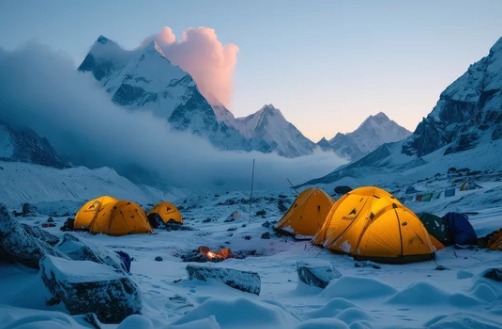
Apr 30, 2024
Island Peak Climbing In February
- Island Peak Climbing with EBC Trek
- Best Time to Climb Island Peak in Nepal
- Why Island Peak in February?
- Everest and Island Peak Climbing During February
- Weather Pattern on Everest and Island Peak During High Seasons
- Helpful Tips for Planning Everest and Island Peak Expedition
- Understanding the Risk of Altitude Sickness and Preventions
- Hydration and Nutrition Monitoring
- Island Peak Climbing Cost
- Attractions of Island Peak Summit
- Island Peak Climb Difficulty Level
- Final Say
- Island Peak Climbing Packages
Island Peak, also known as Imja Tse, stands as an enticing challenge in the heart of the Everest region, Nepal. Climbing Island Peak in February presents a unique adventure amidst the winter landscapes of the Himalayas. At 6,189 meters (20,305 feet), it offers a thrilling ascent that combines technical climbing with breathtaking views of Everest, Lhotse, and Ama Dablam.
February marks the winter season in Nepal, characterized by colder temperatures and occasional snowfall. Despite these challenges, February offers clear skies and relatively stable weather conditions, making it a feasible time for experienced climbers to undertake Island Peak. The trails leading to Island Peak Base Camp and High Camp may be covered in snow, requiring careful navigation and additional effort to ascend steep sections.
The journey typically begins with a scenic flight from Kathmandu to Lukla, followed by a trek through Sherpa villages like Namche Bazaar, Tengboche, and Pangboche. These villages provide insights into Sherpa culture and traditions amidst snowy landscapes adorned with prayer flags.
Climbing Island Peak in February requires climbers to be well-prepared with cold-weather gear, including thermal layers, down jackets, waterproof clothing, gloves, and sturdy boots suitable for crampons. Technical equipment such as crampons, ice axes, harnesses, and helmets are essential for navigating icy slopes and crevassed glaciers.
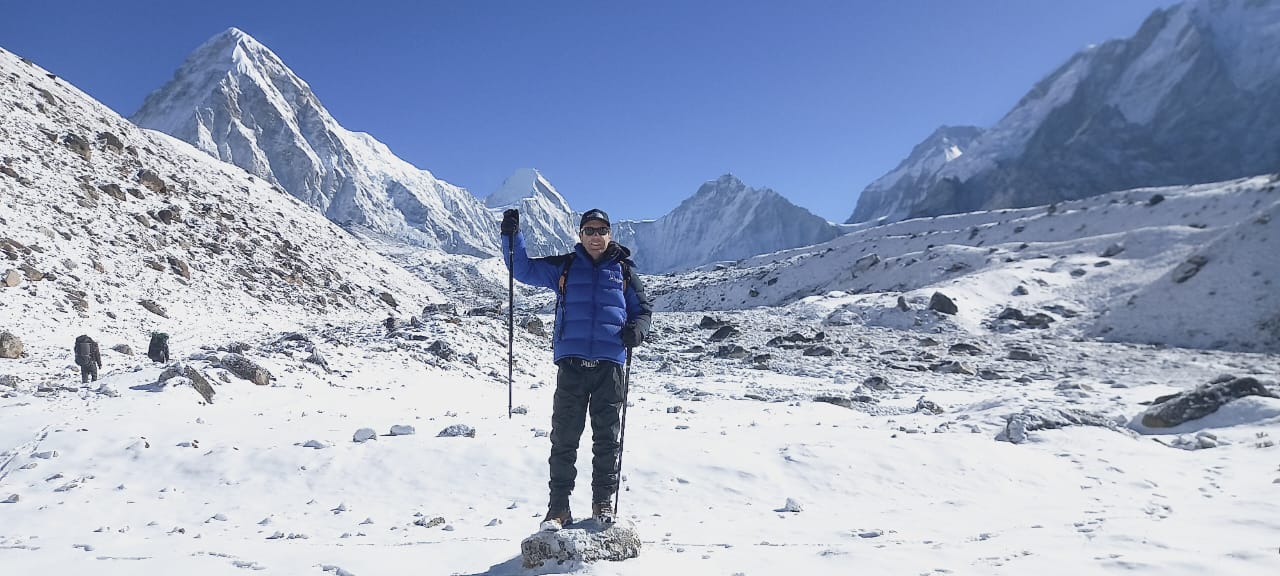
ISLAND AND LOBUCHE PEAK CLIMBING
Lobuche and Island Peak combo climbing expedition is a thrilling adventure that offers a unique opportunity to conquer two popular peaks in the Everest region of Nepal. Lobuche Peak (6,119m) and Islan...
The climb itself involves ascending steep sections with fixed ropes, navigating crevasses, and crossing glacier terrain. Experienced Sherpa guides provide essential support, guiding climbers through technical sections and ensuring safety throughout the expedition. Proper acclimatization, hydration, and nutrition are crucial for managing altitude sickness and maintaining energy levels during the ascent.
Accommodation during the Island Peak expedition includes teahouses or camping at Island Peak Base Camp and High Camp, offering basic amenities amidst the alpine environment. Meals are typically provided by trekking agencies, ensuring climbers receive nourishing food to sustain energy levels.
From the summit of Island Peak, climbers are rewarded with panoramic views of the Everest region, including the iconic sight of Mount Everest itself. The sense of accomplishment and the breathtaking Himalayan vistas make Island Peak climbing in February a memorable and rewarding experience for mountaineering enthusiasts.
In conclusion, Island Peak climbing in February offers a challenging yet achievable adventure in the stunning backdrop of the Everest region's winter scenery. With proper preparation, experienced guidance, and a spirit of adventure, climbers can conquer this Himalayan peak and cherish the unparalleled views from its summit.
Island Peak Climbing with EBC Trek
Combining an Island Peak climb with the Everest Base Camp (EBC) trek offers a comprehensive Himalayan adventure. This expedition allows climbers to experience the cultural richness of the Sherpa villages and the natural beauty of the Everest region while also tackling a technical ascent. Starting from Lukla, the EBC trek winds through Namche Bazaar, Tengboche Monastery, and Gorak Shep, culminating in the iconic viewpoint of Kala Patthar and Everest Base Camp itself. From Gorak Shep, climbers branch off towards Island Peak Base Camp, where they prepare for the summit bid. This dual expedition provides a diverse experience, blending high-altitude trekking with challenging mountaineering, all amidst the stunning backdrop of the Himalayas.
Best Time to Climb Island Peak in Nepal
The best time to climb Island Peak in Nepal is during the pre-monsoon (spring) and post-monsoon (autumn) seasons. These typically fall between March to May and September to November, respectively. During these months, the weather in the Everest region is generally stable, with clear skies, mild temperatures, and minimal precipitation. These conditions offer optimal visibility and safer climbing conditions for tackling the technical challenges of Island Peak. Spring brings blooming rhododendrons and longer daylight hours, while autumn offers clearer views and pleasant trekking conditions after the monsoon rains have cleared.
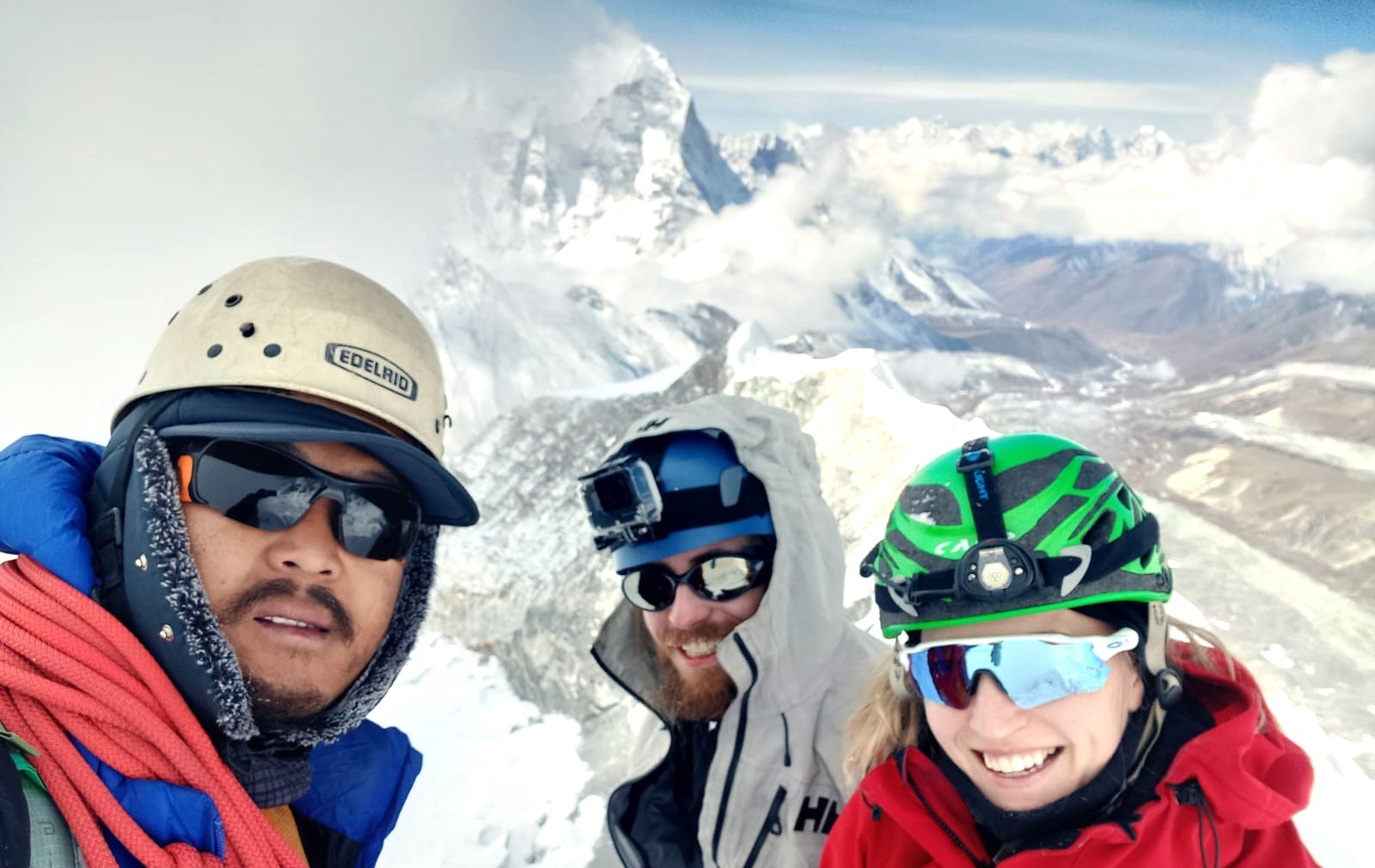
ISLAND PEAK EXPEDITION 15 DAYS
Island Peak, also known as Imja Tse, is a popular peak located in the Khumbu region of Nepal. This peak is a part of the Himalayas and stands tall at a height of 6,189 meters above sea level. Island P...
Why Island Peak in February?
Choosing to climb Island Peak in February offers a unique adventure amidst the winter landscapes of the Everest region. February is characterized by cold temperatures and occasional snowfall, creating challenging but rewarding conditions for experienced climbers. The quieter trails and fewer climbers enhance the sense of solitude and tranquility, allowing for a more intimate experience with the mountains. Clear skies in February provide excellent visibility of the surrounding Himalayan peaks, including Everest, Lhotse, and Ama Dablam, making it a picturesque time for mountaineering.
Everest and Island Peak Climbing During February
February sees climbers embarking on both Everest Base Camp and Island Peak expeditions in Nepal. While Everest Base Camp trekking continues to attract adventurers seeking to reach the iconic viewpoint of Kala Patthar and visit the base camp itself, Island Peak beckons those looking to challenge themselves with technical climbing. Both expeditions benefit from clear winter skies and quieter trails, although Island Peak climbers must contend with colder temperatures and potentially snowy conditions. Nevertheless, the breathtaking views and sense of accomplishment from both Everest and Island Peak make February a popular month for Himalayan expeditions.
Weather Pattern on Everest and Island Peak During High Seasons
During the high seasons of spring (March to May) and autumn (September to November), the weather pattern on Everest and Island Peak is generally favorable for climbing. Spring offers mild temperatures, blooming flora, and longer daylight hours, ideal for trekking and mountaineering. Autumn brings clear skies, stable weather conditions, and post-monsoon visibility, making it the preferred time for summit attempts. Climbers can expect colder temperatures at higher altitudes and should be prepared for occasional snowfall, particularly on Island Peak's summit approach. Proper acclimatization, weather monitoring, and adherence to safety protocols are crucial for a successful and safe expedition during these optimal climbing seasons.
Helpful Tips for Planning Everest and Island Peak Expedition
Planning an Everest and Island Peak expedition requires meticulous preparation and consideration of various factors. Here are some tips:
- Fitness and Training: Prioritize physical fitness and endurance training, including cardiovascular exercises, strength training, and altitude simulation if possible.
- Acclimatization: Plan a gradual ascent schedule to allow the body to adapt to high altitudes, reducing the risk of altitude sickness.
- Gear and Equipment: Invest in quality mountaineering gear, including clothing suitable for cold temperatures, technical climbing equipment (e.g., crampons, ice axe), and a reliable backpack.
- Weather Monitoring: Stay updated on weather forecasts and be prepared for changing mountain conditions.
- Permits and Logistics: Obtain necessary permits (e.g., climbing permits, TIMS card) and arrange logistics through a reputable trekking agency for support and safety.
Understanding the Risk of Altitude Sickness and Preventions
Altitude sickness, or acute mountain sickness (AMS), is a common concern during Everest and Island Peak expeditions due to rapid altitude gain. Symptoms include headaches, nausea, dizziness, and fatigue. Prevention strategies include:
- Gradual Ascent: Allow time for acclimatization with rest days at higher elevations.
- Hydration: Drink plenty of fluids to stay hydrated, avoiding alcohol and caffeine.
- Medication: Consider carrying medications like acetazolamide (Diamox) to help prevent and alleviate symptoms.
- Awareness: Recognize early signs of altitude sickness and descend if symptoms worsen.
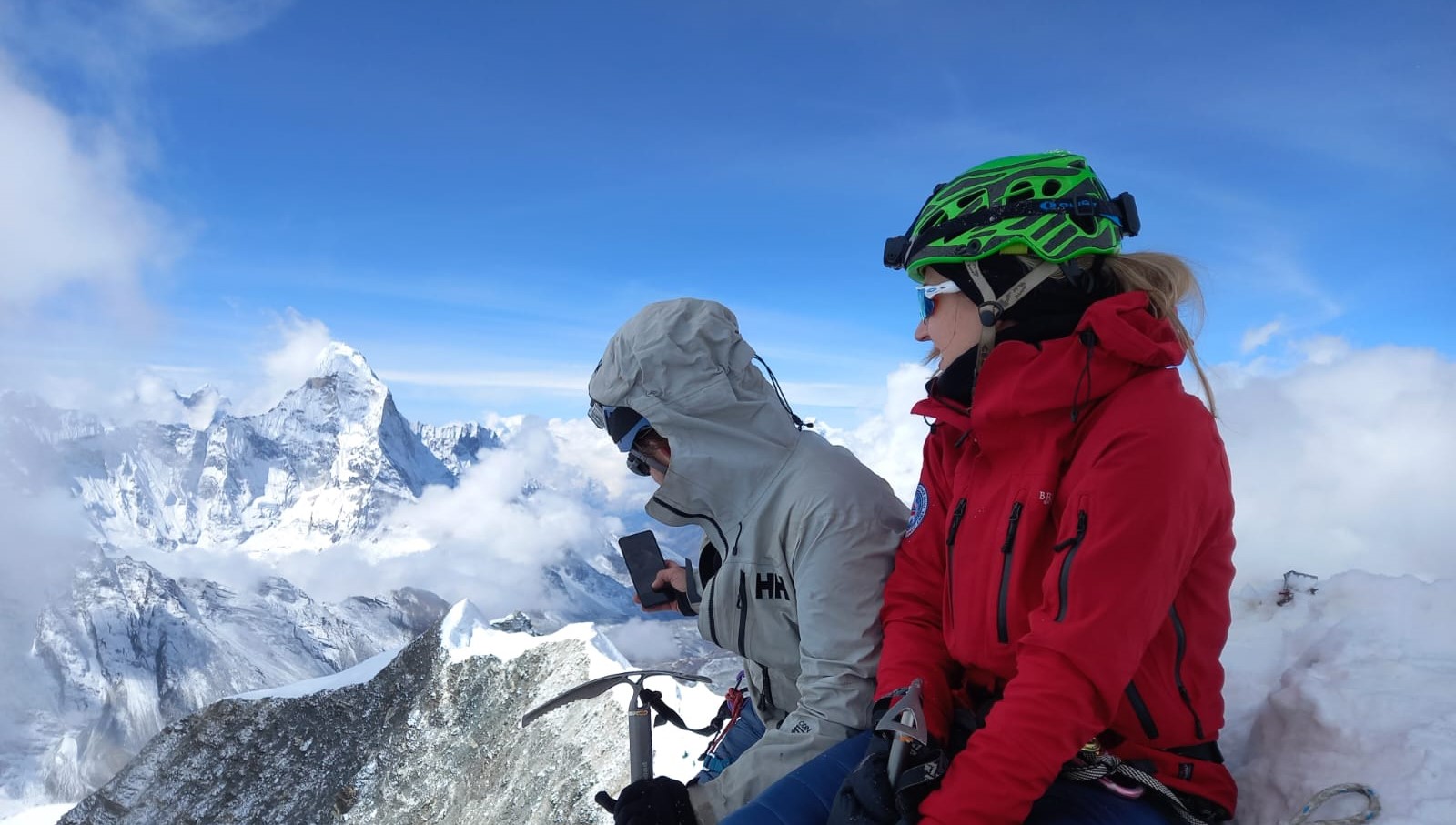
ISLAND PEAK EXPEDITION 14 DAYS
Island Peak Expedition is a 14-day adventure tour that takes you to the heart of the Himalayas, where you can witness the beauty of the mountains, valleys, and glaciers. Island Peak, also known as Imj...
Hydration and Nutrition Monitoring
Hydration and nutrition are crucial for maintaining energy levels and aiding altitude acclimatization during Everest and Island Peak climbs. Drink at least 3-4 liters of water daily to prevent dehydration at high altitudes. Consume balanced meals rich in carbohydrates, proteins, and vitamins to sustain physical exertion. Monitoring hydration and nutrition helps optimize performance and reduce the risk of altitude-related illnesses.
Island Peak Climbing Cost
The cost of climbing Island Peak varies depending on factors such as the trekking agency, services included, duration, and group size. On average, expect to budget between USD 3,000 to USD 6,000 per person. This typically covers permits, guide and porter services, accommodation, meals, trekking and climbing equipment, transportation, and insurance. Additional expenses may include international flights, visas, personal gear purchases or rentals, tips, and contingency funds. Choosing a reputable agency ensures safety, quality services, and support throughout the expedition, making Island Peak climbing a worthwhile investment for mountaineering enthusiasts.
Attractions of Island Peak Summit
The summit of Island Peak offers breathtaking panoramic views of Everest, Lhotse, Nuptse, and surrounding Himalayan peaks. Climbers experience a sense of achievement after conquering technical challenges like glacier crossings and steep ascents. The journey also includes cultural immersion in Sherpa villages and visits to Buddhist monasteries. The pristine alpine environment and solitude of winter months enhance the allure of Island Peak, making it a memorable and rewarding Himalayan climb.

ISLAND PEAK CLIMBING
Sherpa Expedition & Trekking (Est.1977) are pleased to announce FOR ADVENTURERS the most awesome, exhilarating & unforgettable climbing and treks on offer anywhere today!...
Island Peak Climb Difficulty Level
Island Peak climbing is considered challenging due to technical sections requiring the use of crampons, ropes, and ice axes. The ascent involves navigating crevassed glaciers and steep icy slopes. Climbers should have prior high-altitude trekking experience and basic mountaineering skills. The climb demands physical fitness, mental resilience, and adherence to safety protocols. Despite its difficulty, Island Peak rewards climbers with stunning views and a profound mountaineering experience in the heart of the Everest region.
Final Say
Embarking on an Everest and Island Peak expedition requires thorough planning, physical preparation, and awareness of altitude-related risks. With proper training, acclimatization, and support from experienced guides, climbers can conquer these iconic Himalayan peaks. The journey offers unparalleled natural beauty, cultural insights, and personal accomplishment, making it a transformative adventure for those seeking the ultimate mountaineering challenge.

ISLAND PEAK SUMMIT RETURN BY HELICOPTER
Many of us only dream of standing on a tall peak looking down on the world. This is a great climb that will satisfy this desire. Island Peak, also referred to as Imja Tse, is a 6187-meter high peak in...
Island Peak Climbing Packages
Island Peak Summit Return By Helicopter
Island Peak Expedition 14 Days
Island Peak Expedition 15 Days
Everest Three Pass with Island Peak Climbing
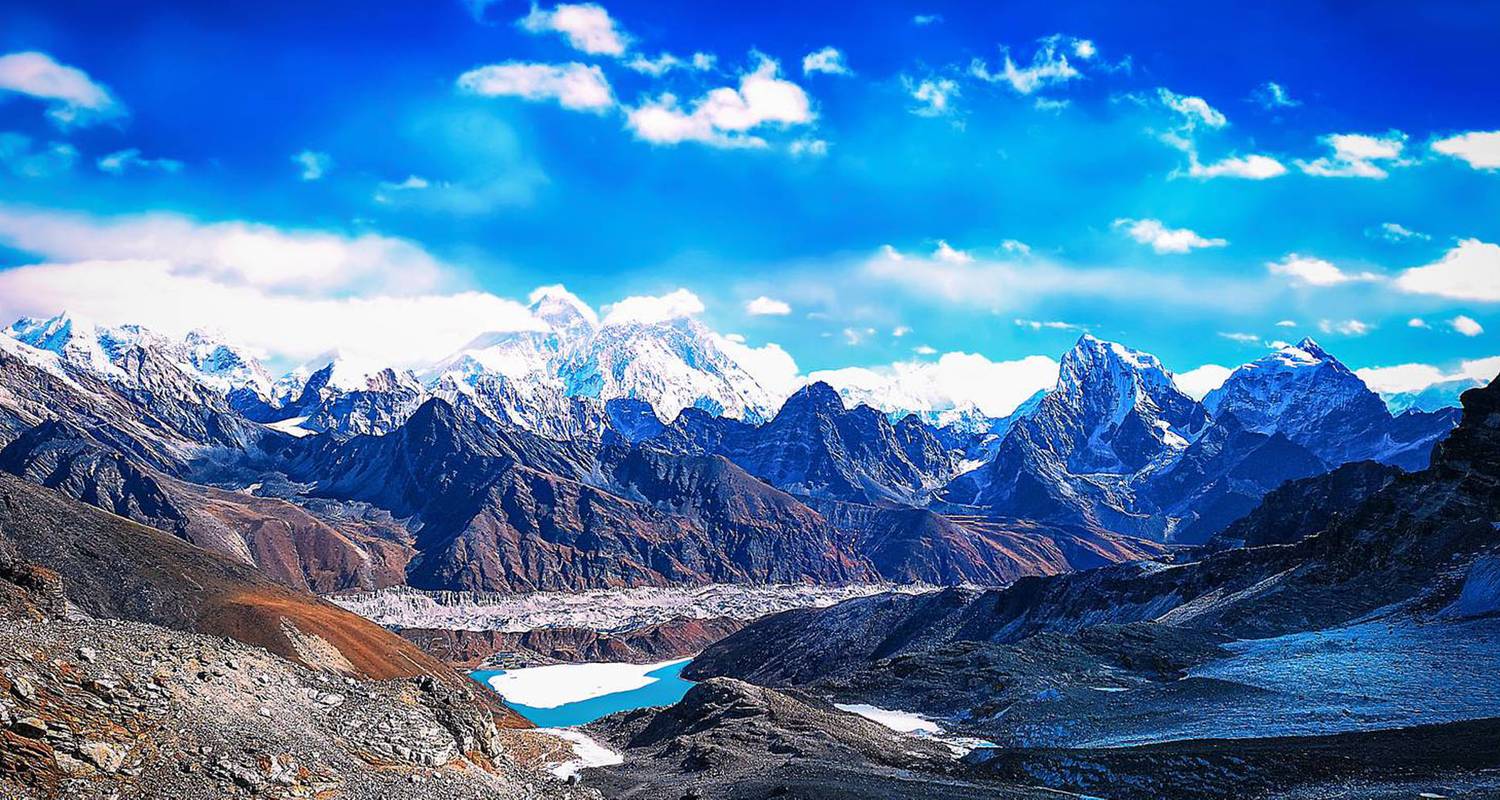
Everest Three High Pass Trek with Island Peak Climbing
The Everest Three High Pass Trek with Island Peak Climbing is an exhilarating and challenging adventure that takes you through the stunning landscapes of the Everest region in Nepal. This 23-25...
Any Questions? Let Us Know.
Recent Posts
10th December, 2025
09th December, 2025


















